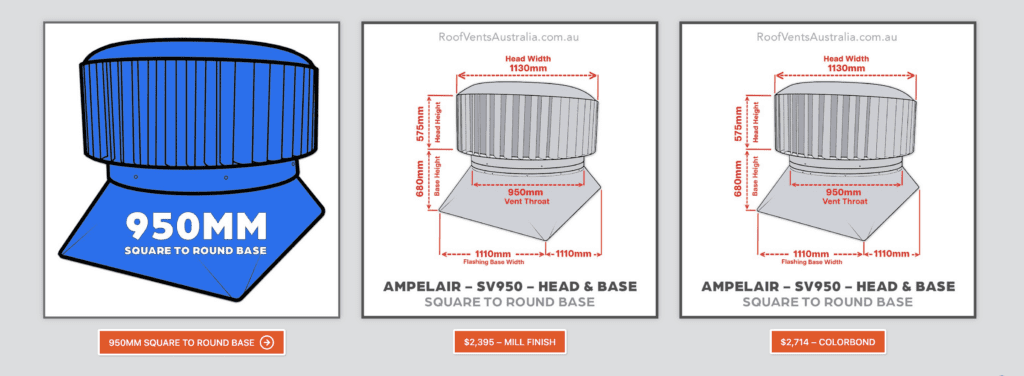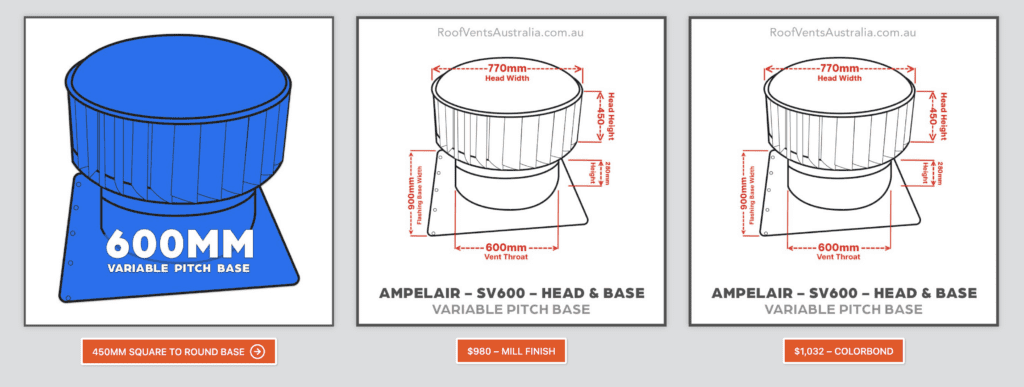Comprehensive Guide to Ventilating a Commercial Office Building in Australia
Rain Heads Custom Made Shipped Free Australia Wide – Click Here >
Dambuster Rain Heads Shipped Free Australia Wide – Click Here >
Commercial Industrial Roof Vents 300mm-950mm – Click Here >
Eco-Friendly Roofing Insulation Shipped Free – Click Here >
Gutter Sumps Shipped Free Australia Wide – Click Here >
Introduction
The ventilation of a commercial building is an essential aspect of building design that ensures the health and comfort of its occupants. Inadequate ventilation can lead to a range of problems, including poor air quality, the spread of airborne diseases, and increased energy consumption. While generic guidelines exist, the climatic diversity of Australia makes it essential to customize the ventilation system based on regional conditions.
National Construction Code (NCC)
The NCC serves as the regulatory backbone for construction across Australia. It covers various elements such as structural integrity, fire safety, health and amenity, and energy efficiency, including ventilation.
Code Sections to Note:
- Section J focuses on energy efficiency, including aspects like insulation and ventilation requirements.
Other Regulatory Bodies and Codes
- Green Building Council of Australia (GBCA): While not a government body, the guidelines provided by GBCA can offer additional insights into sustainable building practices.
Online Resources
- NCC updates are regularly posted on the Australian Building Codes Board (ABCB) website.
- Australian Standards can be purchased from the SAI Global website or other accredited vendors.
State-Wise Climate and Ventilation Needs: An In-Depth Look
New South Wales (NSW)
Climate:
- Coastal areas like Sydney experience humid subtropical climates with moderate temperature ranges.
- Western regions like Broken Hill have a semi-arid climate characterized by hot summers and mild winters.
Ventilation Strategies:
- Coastal:
- Natural ventilation is particularly effective here. Air filtration systems that can remove humidity and saline particles are beneficial.
- Cross-ventilation techniques should be considered, especially where the sea breeze is prevalent.
- Western:
- Advanced cooling systems like swamp coolers are recommended.
- Ventilation controls to manage indoor moisture levels and to mitigate dust ingress.
Victoria (VIC)
Climate:
- Generally cooler with a temperate climate, prone to seasonal changes.
Ventilation Strategies:
- Use of thermal mass in buildings can help maintain a balanced internal temperature.
- Humidity control systems can mitigate the damp conditions often experienced in winter.
Queensland (QLD)
Climate:
- Northern regions experience tropical climates with heavy rainfall and high humidity.
- Southern areas like Brisbane are subtropical with milder conditions.
Ventilation Strategies:
- Northern:
- Dehumidifiers can be used in conjunction with mechanical ventilation to manage high humidity levels.
- Southern:
- Zoned HVAC systems are recommended to handle differing occupancy levels and temperature needs across the building.
South Australia (SA)
Climate:
- Mediterranean climate in cities like Adelaide with hot summers and cool, wet winters.
Ventilation Strategies:
- Time-controlled ventilation can be particularly effective to manage peak summer temperatures.
- Humidity sensors are recommended for real-time ventilation adjustments.
Western Australia (WA)
Climate:
- Ranges from tropical in the north to Mediterranean in the south.
Ventilation Strategies:
- Demand-controlled ventilation systems are useful here, given the large geographical spread and climatic variation.
Tasmania (TAS)
Climate:
- Generally cooler and oceanic, with relatively stable conditions year-round.
Ventilation Strategies:
- Heat recovery ventilation (HRV) systems are highly recommended to capitalize on any generated internal heat.
Australian Capital Territory (ACT)
Climate:
- Experiences a relatively dry continental climate with hot summers and cold winters.
Ventilation Strategies:
- Incorporating solar chimneys can aid in natural ventilation during summer months.
- Humidifiers can add moisture to the dry winter air, working in tandem with ventilation systems.
Northern Territory (NT)
Climate:
- Tropical in the north and arid in the central and southern regions.
Ventilation Strategies:
- Consider using roof ventilators and air deflectors in arid regions.
- High-efficiency particulate air (HEPA) filters can minimize the infiltration of external pollutants.
Additional Considerations
Energy Efficiency
- Building Management System (BMS): Utilize a BMS to centrally control the ventilation systems, thus optimizing energy use.
Health and Well-being
- Indoor Air Quality (IAQ): Keep track of IAQ parameters like VOCs, carbon dioxide, and particulate matter.
Cost
- While efficient systems may have a higher initial cost, they often pay off in the long term through lower operational costs.
Conclusion
Ventilation is a multi-faceted aspect of building design that requires careful planning and implementation. Not only should the system meet the regulatory requirements set forth by the NCC and other bodies, but it should also be customized to the specific climatic conditions of the location. By understanding the unique needs of each Australian state and territory, builders can design systems that are both efficient and effective, contributing to healthier, more comfortable indoor environments.
References
- National Construction Code: ABCB
- Australian Standards: SAI Global
- Climate Data: Bureau of Meteorology
- Green Building Council of Australia: GBCA
Note: All code references and guidelines are current as of 2021; please refer to the latest versions for the most up-to-date information.


